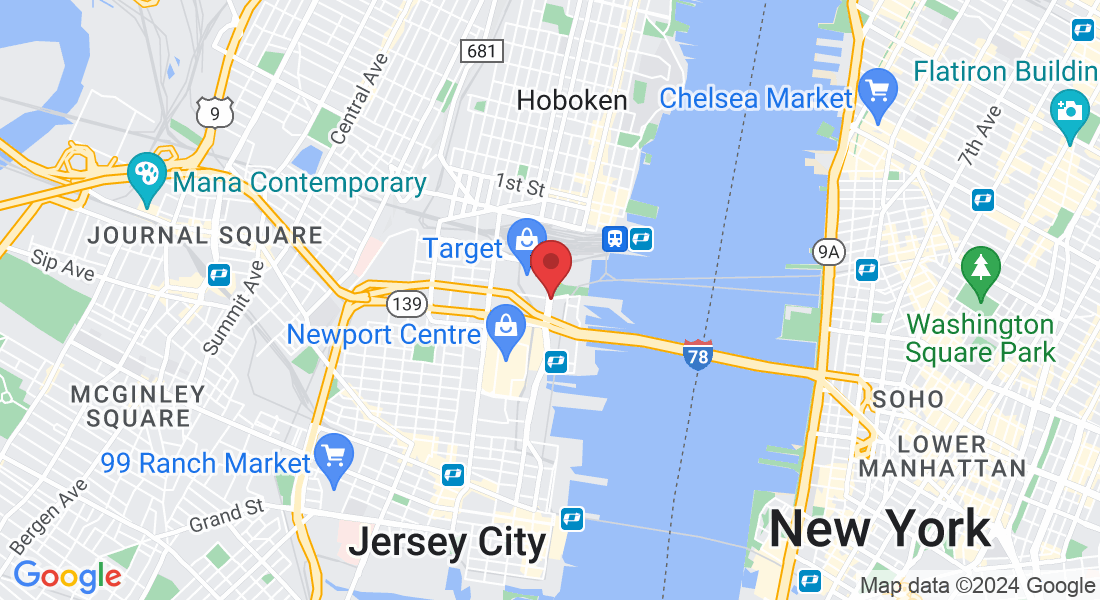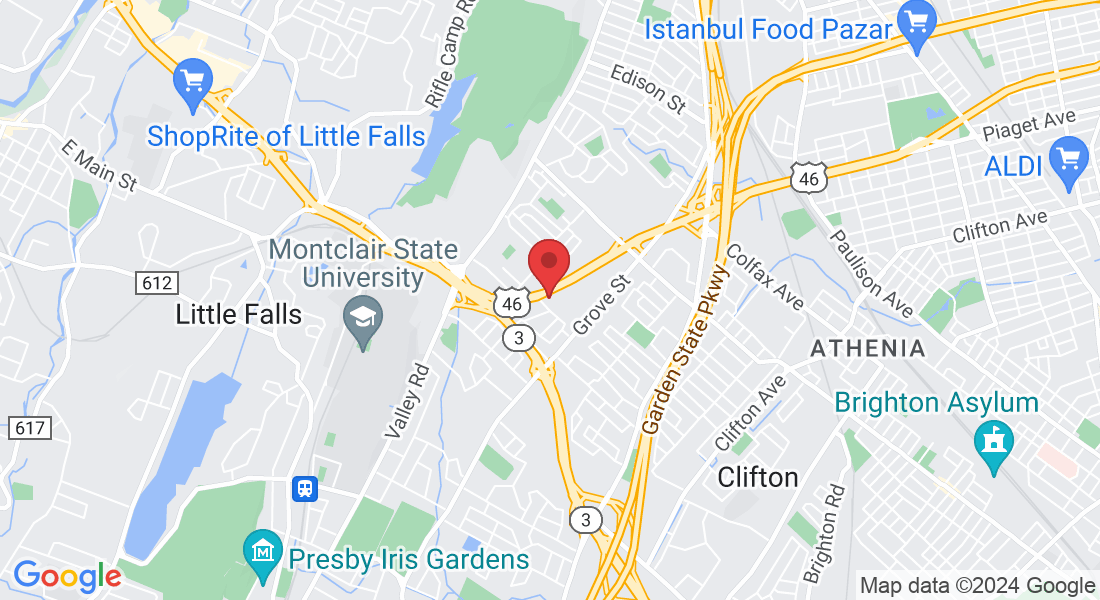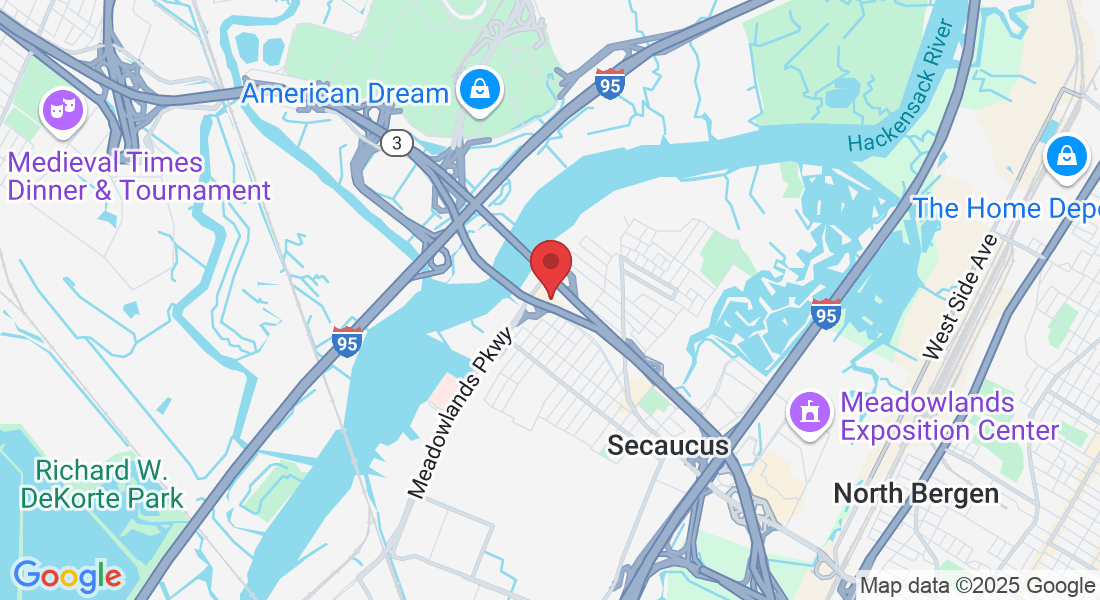New Jersey Rehab Experts
Specializing in comprehensive orthopedic care, New Jersey Rehab Experts offers a wide range of services including Physical Therapy, Sports Physical Therapy, Dry Needling, Chiropractic Care, Neuropathy Treatment, Pain Management, and Manual Therapy. Our state-of-the-art facility is staffed by board-certified therapists dedicated to delivering top-tier care, ensuring you achieve optimal recovery and wellness.
Clinic Located in Newport , Hillsborough and Clifton
Genuine Feedback from
Our Patients
Our Affiliations

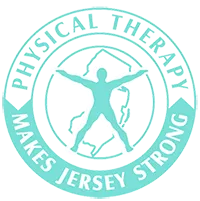

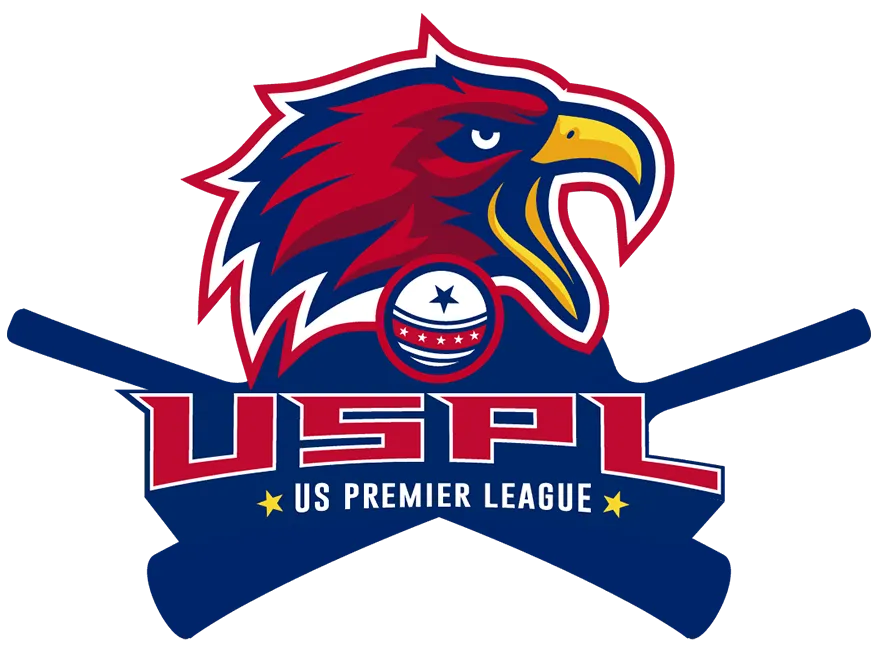


Explore Our Diverse Range of Disciplines
Discover a world of exceptional care customized for all ages! Our dedicated professionals deliver top-notch medical attention, expert rehabilitative therapy, and warm companion care for adults, seniors, and young patients. Experience personalized healthcare with a heart!
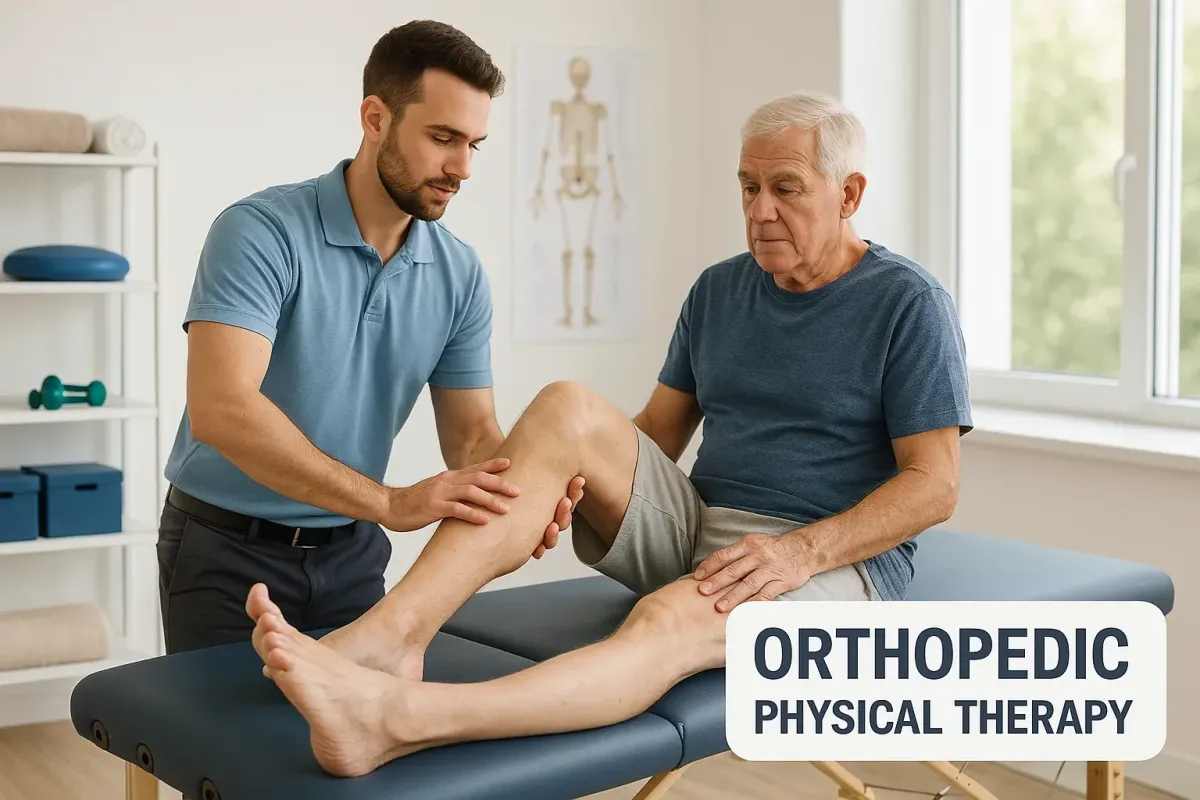
Orthopedic Physical Therapy
At New Jersey Rehab Experts our Orthopedic Physical Therapy program is designed to help patients recover from musculoskeletal injuries, surgeries, and chronic conditions affecting the bones, joints, muscles, ligaments, and tendons. Whether you're healing from a sports injury, managing arthritis, or recovering after orthopedic surgery, our expert therapists create personalized treatment plans to restore mobility, reduce pain, and improve overall function. We use evidence-based techniques such as manual therapy, therapeutic exercises, joint mobilization, dry needling, ultrasound, and neuromuscular re-education
to accelerate your recovery and prevent future injuries.
Our goal is to get you moving confidently and pain-free—whether you're getting back to the gym, the job site, or simply your everyday routine.

Geriatric Physical Therapy
Our Geriatric Physical Therapy services are tailored to meet the unique needs of older adults. As we age, our bodies undergo natural changes that can affect balance, strength, mobility, and overall independence. Our experienced therapists are here to help seniors stay active, safe, and confident in their daily lives.
We specialize in the prevention and treatment of age-related conditions such as osteoporosis, arthritis, joint replacements, balance disorders, and general deconditioning. Our personalized therapy programs focus on restoring strength, improving flexibility, reducing pain, and preventing falls.
Our geriatric therapy goals include: Enhancing mobility and functionPreventing falls and promoting safetyManaging chronic painIncreasing independence in daily activitiesSupporting recovery from surgery or hospitalization. We take a compassionate, patient-centered approach to care—empowering seniors to maintain a higher quality of life and remain active within their homes and communities.
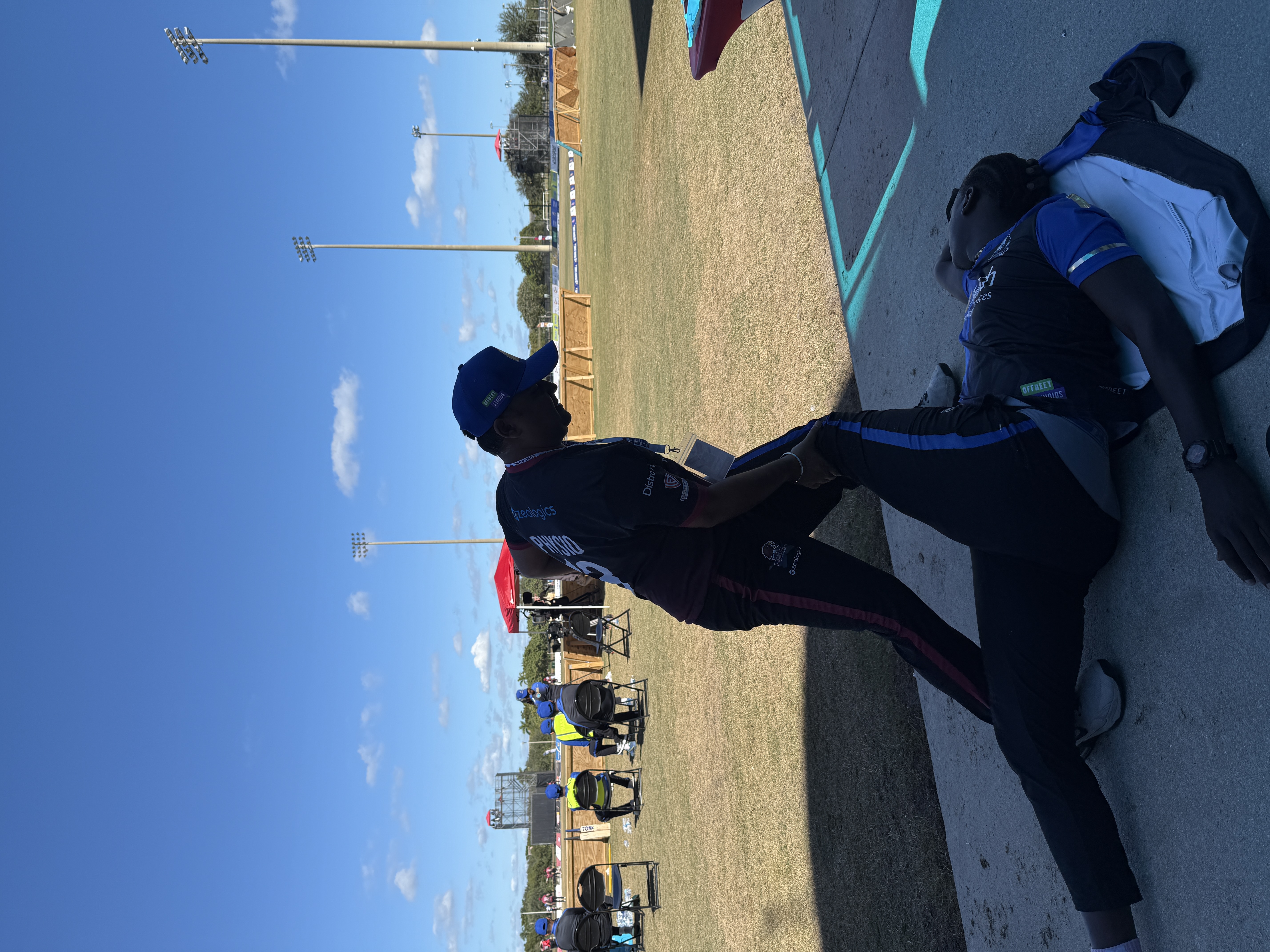
Sports Physical Therapy
At New Jersey Rehab Experts our Sports Physical Therapy program is built for athletes of all levels—from weekend warriors to professional players. Whether you're recovering from an injury, enhancing performance, or aiming for a safe return to sport, we’ve got your back (and knees, shoulders, ankles… you name it!).
Our sports rehab specialists use advanced techniques and evidence-based protocols to treat common athletic injuries such as ACL tears, rotator cuff strains, tennis/golfer’s elbow, sprains, tendonitis, and more We combine manual therapy, functional training, neuromuscular re-education, strength conditioning, dry needling, and return-to-sport testing to help you recover faster and perform better.
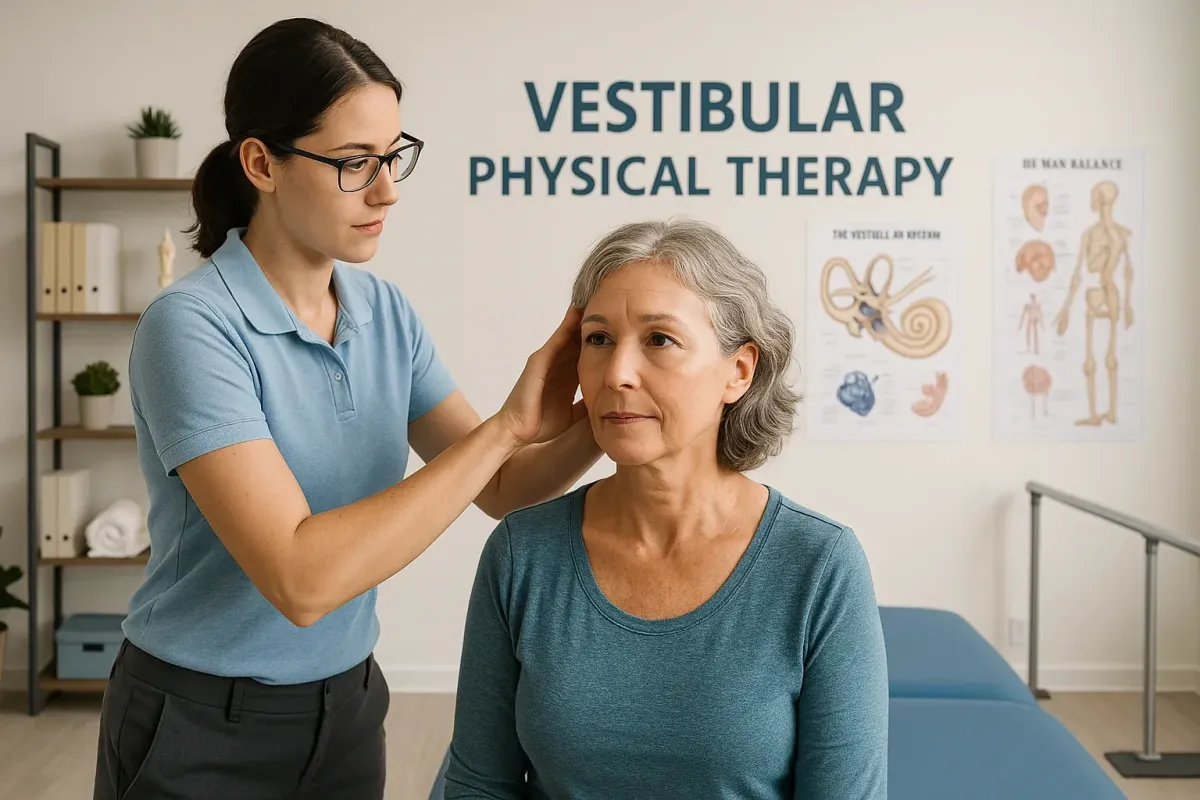
Vestibular Rehabilitation Therapy (VRT)
Feeling dizzy, off-balance, or lightheaded? You're not alone—and you don’t have to live with it. At
New Jersey Rehab Experts our Vestibular Rehabilitation Therapy (VRT) is designed to help you regain control, stability, and confidence in your everyday movements. VRT is a specialized form of physical therapy aimed at treating disorders of the inner ear and balance system , such as vertigo, BPPV (Benign Paroxysmal Positional Vertigo), Meniere’s disease, post-concussion dizziness, and general imbalance. These conditions can make even simple tasks feel overwhelming—but with the right therapy, relief is possible. Our skilled therapists perform a thorough assessment to identify the root cause of your symptoms and develop a custom treatment plan using: Balance and gaze stabilization exercises Canalith repositioning maneuvers (like the Epley maneuver) Habituation and desensitization techniques Fall prevention strategie
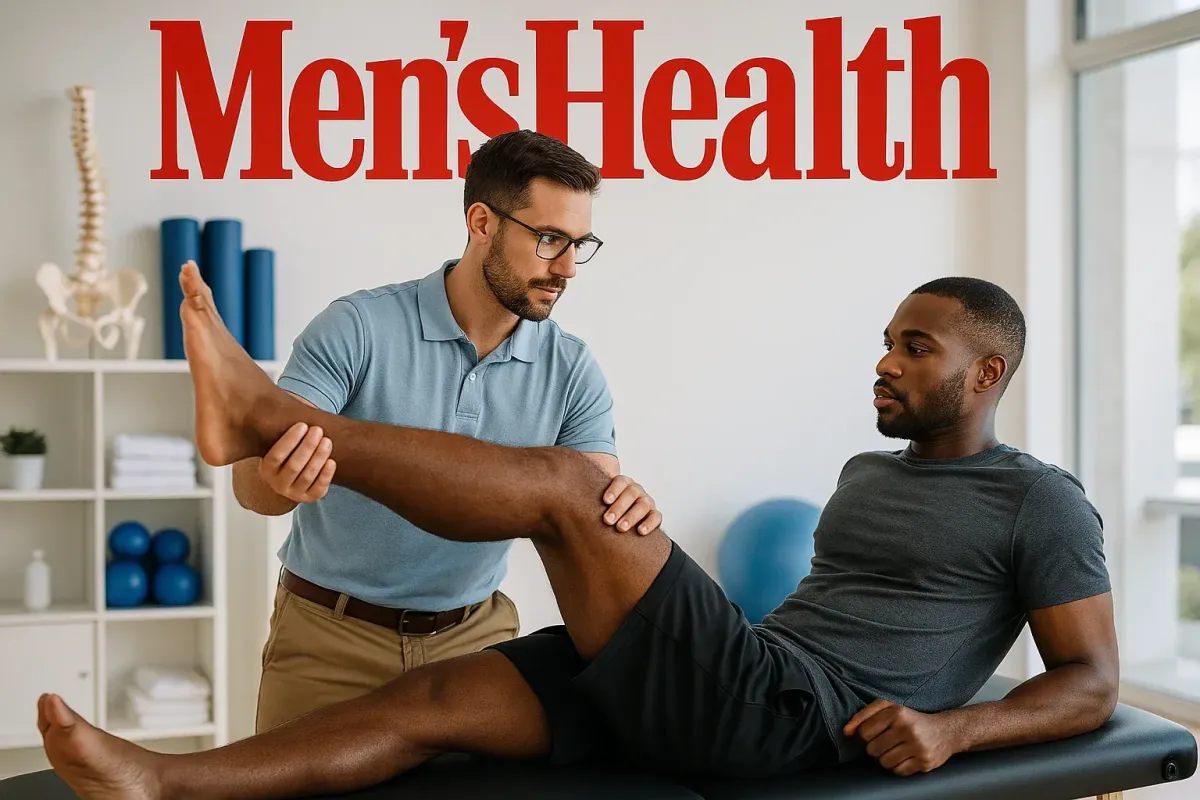
Men's Health Physical Therapy (Pelvic Health PT)
Pelvic health isn’t just a women’s issues men experience it too and we’re here to help. At New Jersey Rehab Experts our Men’s Health Physical Therapy
program is designed to treat a wide range of pelvic floor dysfunctions that can impact comfort, confidence, and quality of life. Our expert therapists offer
discreet, one-on-one care for men experiencing: Pelvic painUrinary urgency, frequency, or leakagePost-prostatectomy rehabilitationErectile dysfunctionConstipation and bowel issuesCore weakness or abdominal pressure Through targeted manual therapy, pelvic floor retraining, biofeedback, breathing techniques, and posture correction, we help restore normal function and reduce symptoms—without surgery or medication. Why it matters: Pelvic floor dysfunction can be frustrating, but it’s also very treatable. We take a judgment-free, evidence-based approach to help men feel strong, supported, and back in control of their bodies. Take the first step toward healing—you don’t have to suffer in silence
.

Motor Vehicle & Work Injury Rehab Specialist
At New Jersey Rehab Experts, we specialize in
Motor Vehicle and Work Injury Rehabilitation, helping patients recover from car accidents and workplace injuries with expert, personalized care. Our team treats conditions such as whiplash, low back pain, joint injuries, concussions, and soft tissue damage, using evidence-based therapy to reduce pain, restore function, and support long-term recovery. We work closely with physicians, attorneys, and insurance providers to ensure proper documentation and seamless coordination of care. Whether you're dealing with a workers' comp case or personal injury claim, our goal is to get you back to work, life, and movement—safely and confidently.
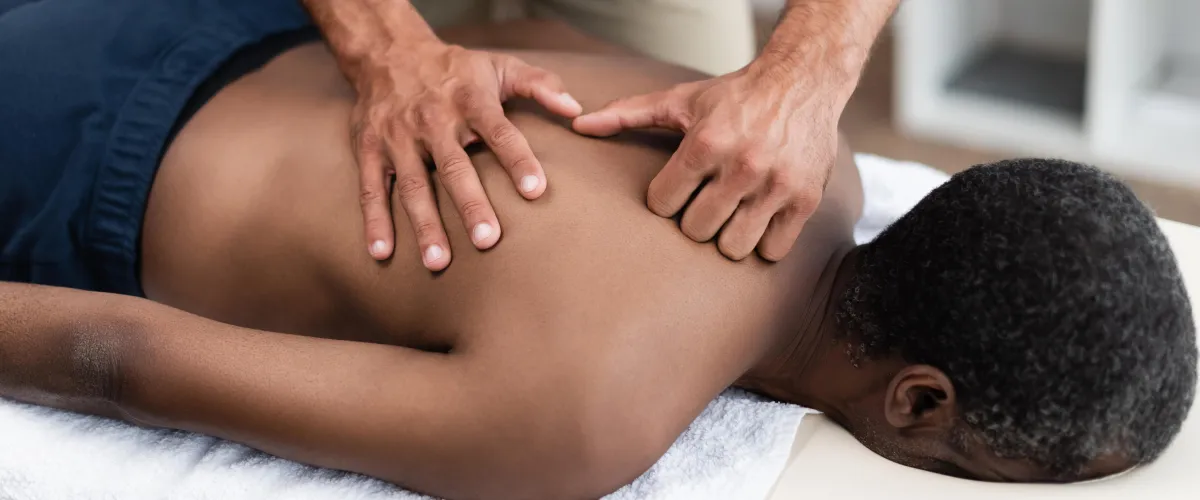
Manual Therapy
Looking for a hands-on approach that goes beyond basic physical therapy?
Manual Therapyoffers targeted, expert techniques designed to relieve pain, improve mobility, and accelerate healing—naturally. This isn’t your average treatment. Imagine combining the precision of Mulligan Mobilizations with the posture-correcting power of the McKenzie Method, or experiencing the rapid results of High-Velocity Thrust Techniques and Spinal Manipulation to unlock stiff joints. Add in the deep-tissue benefits of Myofascial Release (MFR)
and the dynamic support of Kinesiology and Sports Taping, and you’ve got a comprehensive system that helps you move better, recover faster, and feel your best. Whether you're an athlete, a desk worker, or simply tired of chronic pain—this is where real, lasting relief begins.
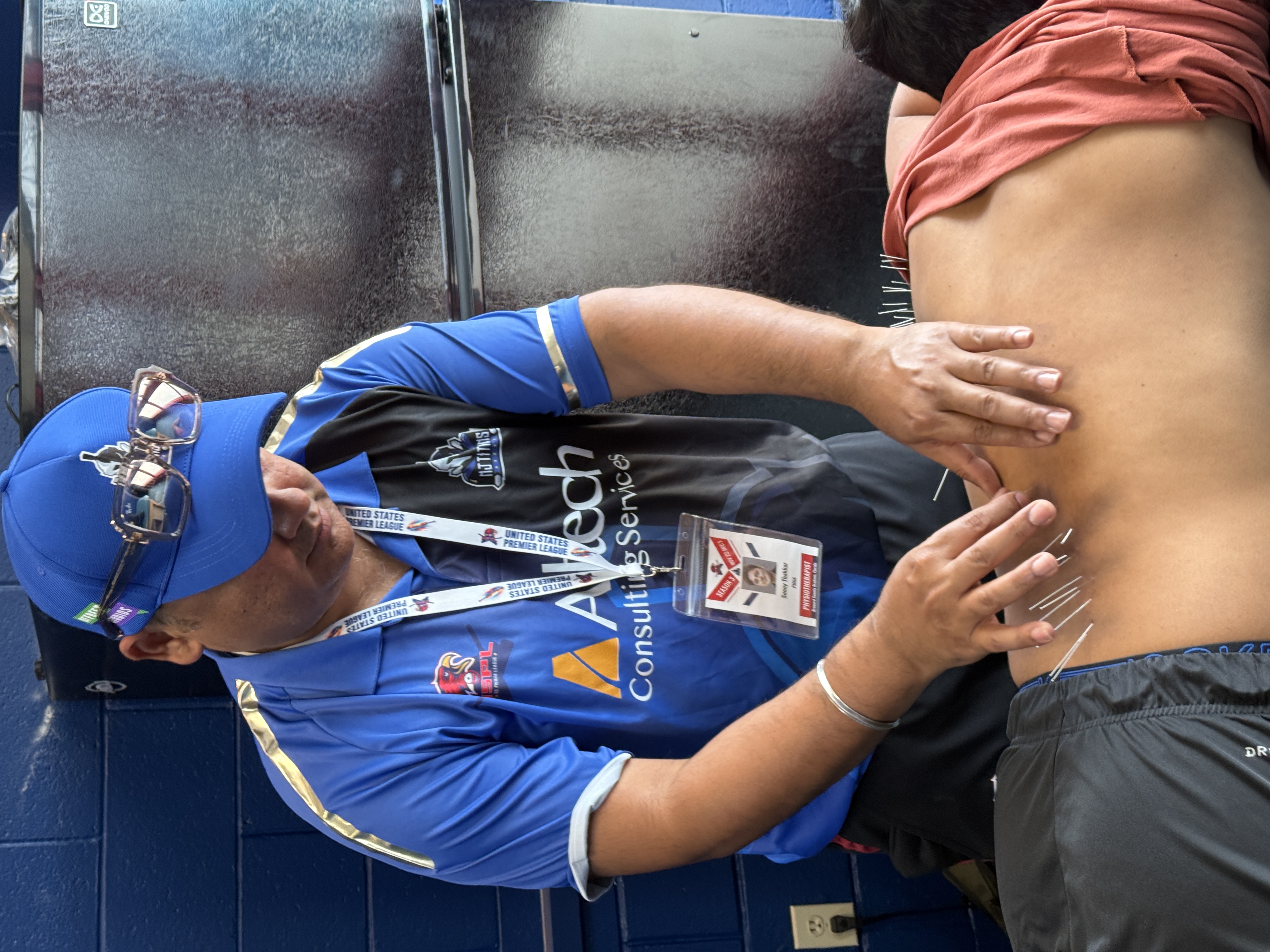
Dry Needling
Dry Needling
is a modern, evidence-based treatment technique used by licensed physical therapists to target trigger points—tight knots in muscles that cause pain and restrict movement. By inserting thin, sterile needles into these areas, dry needling helps release muscle tension, improve blood flow, reduce pain, and restore normal function. It is commonly used to treat conditions like back and neck pain, tendonitis, headaches, sciatica, and sports-related injuries. Unlike acupuncture, which is based on traditional Chinese medicine, dry needling is grounded in Western anatomical and neurophysiological principles, making it a safe and effective option for musculoskeletal pain and dysfunction.
Our Advantages
Specialized Programs for Every Need
From orthopedic rehab and sports therapy to vestibular, pelvic health, and post-injury recovery, we provide comprehensive, patient-focused solutions.
State-of-the-Art Techniques & Technology
We use cutting-edge treatments like dry needling, spinal manipulation, Mulligan & McKenzie techniques, Fit3D scans, Shockwave Therapy , Cupping and more to accelerate healing.
Personalized One-on-One Care
Every patient receives individualized treatment plans with hands-on attention to ensure faster recovery and long-term results.
Trusted by Athletes & Community Leaders
Official providers for multiple cricket teams and a member of respected healthcare associations—our reputation speaks for itself.
Multiple Convenient Locations Across NJ
With clinics in Jersey City, Secaucus, Clifton , and beyond, we’re always within reach—offering flexible scheduling and bilingual support.
Seamless Support for Injury Claims & Recovery
We coordinate care with attorneys, physicians, and insurers for patients recovering from motor vehicle or work-related injuries, ensuring smooth documentation and stress-free rehab.
Meet Our Team

Sunny Thakkar PT, MS ( Exercise Physiologist)
Physical Therapist

Ashish Sinha, PT, DPT
Physical Therapist

Dr. Rohit Farzala PT, DPT
Physical Therapist
About Us
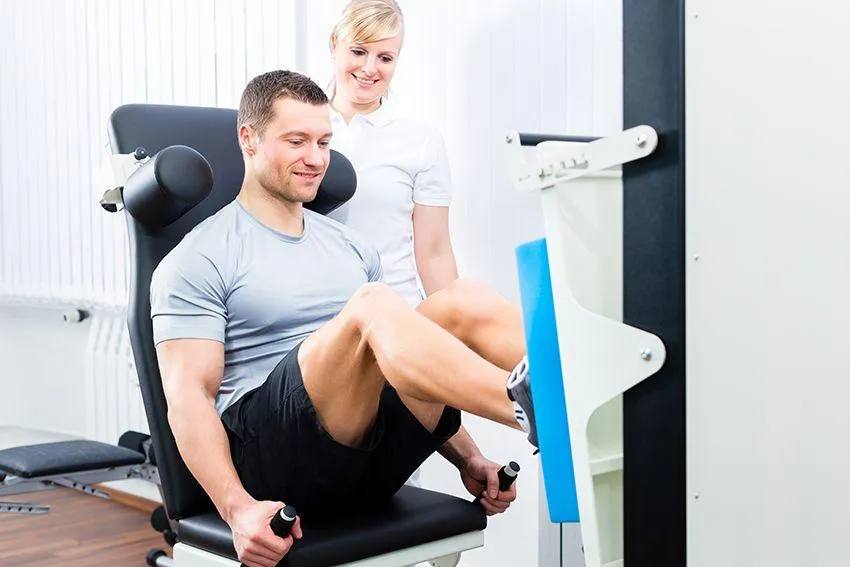

Experience rapid rejuvenation as our specialist team harnesses the power of advanced healing tech to erase pain with ease. We dive deep into your world, assessing every piece of the puzzle—stress at work, life pressures, physical health, nutrition, genes, posture, and even emotional ties—crafting a tailor-made wellness blueprint that's as unique as you are. With our dedicated holistic touch, we don't just treat symptoms; we empower you to embrace a pain-free, harmonious life.
Ask a Question

Muscle vs. Nerve Pain: How to Identify, Treat, and Prevent Each Type for Lasting Relief
Muscle vs. Nerve Pain: How to Identify, Treat, and Prevent Each Type for Lasting Relief
Pain is a universal experience, yet not all discomfort is created equal. Understanding the difference between muscle pain and nerve pain is essential for effective relief and recovery. Muscle pain often stems from overuse, tension, or strain, manifesting as soreness or tightness, while nerve pain can be more complex, usually characterized by sharp, shooting sensations or numbness. This article will guide you through identifying the nuances of each type, empowering you to implement targeted treatment strategies. From self-care techniques to professional interventions, we’ll explore practical solutions to help you overcome day-to-day challenges. Additionally, we’ll discuss preventive measures to minimize the risk of recurrence, ensuring lasting relief. Whether you're an athlete pushing your limits or someone dealing with chronic discomfort, understanding muscle vs. nerve pain will equip you with the knowledge you need to take control of your health and well-being. Let’s dive deeper into the intricacies of pain and find the path to a more comfortable life.
Understanding Muscle Pain vs. Nerve Pain
Pain is a multifaceted experience that can significantly impact daily life, yet it is not always easy to pinpoint its source. Understanding the distinction between muscle pain and nerve pain is crucial in guiding effective treatment strategies. Muscle pain, also known as myalgia, typically arises from physical exertion, tension, or minor injuries. It manifests as a dull ache, tenderness, or soreness, and is often localized to a specific area. This type of pain is generally more straightforward to identify and treat, often responding well to rest, ice, and over-the-counter pain relievers.
In contrast, nerve pain, or neuropathic pain, is a more complex condition that originates from damage or dysfunction within the nervous system. Unlike muscle pain, nerve pain is often described as sharp, burning, or shooting, and it can radiate along the path of the affected nerve. This pain can also be accompanied by sensations of numbness, tingling, or weakness, making it more challenging to diagnose and treat. Neuropathic pain can result from various conditions, including diabetes, shingles, and nerve injuries, and often requires a more comprehensive approach to management.
Recognizing the differences between muscle and nerve pain is essential for implementing the right treatment plan. While muscle pain can often be managed through simple self-care techniques and lifestyle modifications, nerve pain may necessitate a combination of medications, physical therapy, and possibly even surgical interventions. By understanding the unique characteristics and underlying causes of each type of pain, individuals can take proactive steps towards achieving lasting relief and improved quality of life.
Common Causes of Muscle Pain
Muscle pain can be attributed to a variety of factors, many of which are related to physical activity and lifestyle choices. One of the most common causes is overuse or strain, which occurs when a muscle is pushed beyond its limits. This can happen during intense exercise, repetitive movements, or even from maintaining poor posture over extended periods. The resulting microtears in the muscle fibers lead to inflammation and soreness, which is typically temporary and resolves with adequate rest and recovery.
Injuries, such as sprains and strains, are another frequent cause of muscle pain. These injuries can occur suddenly, often during activities that involve lifting, twisting, or sudden impacts. Sprains involve the stretching or tearing of ligaments, while strains refer to similar damage to muscles or tendons. Both types of injuries can cause significant discomfort and may require medical attention, especially if the pain is severe or accompanied by swelling and bruising.
Muscle pain can also be a symptom of underlying medical conditions. For example, fibromyalgia is a chronic disorder characterized by widespread musculoskeletal pain, fatigue, and tenderness in specific areas. Other conditions, such as myofascial pain syndrome, involve the development of trigger points within the muscles that can cause localized pain and discomfort. Infections, such as the flu and other viral illnesses, can also lead to muscle aches as the body mounts an immune response. Understanding the various causes of muscle pain is essential for determining the appropriate course of treatment and achieving effective relief.
Common Causes of Nerve Pain
Nerve pain, or neuropathic pain, can arise from a wide range of conditions that affect the nervous system. One of the most prevalent causes is diabetes, which can lead to diabetic neuropathy. This condition occurs when high blood sugar levels cause damage to the nerves, particularly in the extremities, resulting in sensations of burning, tingling, and numbness. Diabetic neuropathy can significantly impact a person's quality of life and requires careful management of blood sugar levels to prevent further nerve damage.
Another common cause of nerve pain is shingles, a viral infection caused by the reactivation of the varicella-zoster virus, which also causes chickenpox. Shingles typically presents as a painful rash that follows the path of a nerve, often on one side of the body. The pain can be intense and may persist even after the rash has healed, a condition known as postherpetic neuralgia. Early treatment with antiviral medications can help reduce the severity and duration of shingles-related nerve pain.
Nerve pain can also result from physical injuries that compress, stretch, or sever nerves. Conditions such as carpal tunnel syndrome, sciatica, and herniated discs involve nerve compression and can lead to sharp, shooting pains along the affected nerve pathways. Additionally, autoimmune diseases like multiple sclerosis and lupus can cause nerve inflammation and damage, contributing to neuropathic pain. Identifying the specific cause of nerve pain is crucial for developing an effective treatment plan and improving patient outcomes.
Key Symptoms to Differentiate Muscle Pain from Nerve Pain
Differentiating between muscle pain and nerve pain involves recognizing the unique symptoms associated with each type. Muscle pain is typically characterized by a dull, aching sensation that can be localized to a specific area. This pain may be accompanied by stiffness, tenderness, and swelling, particularly after physical activity or injury. Muscle pain often improves with rest, ice, and over-the-counter pain medications, and it is generally limited to the affected muscle group.
In contrast, nerve pain presents with more distinct and often more intense symptoms. Neuropathic pain is frequently described as sharp, burning, or shooting, and it can radiate along the path of the affected nerve. This type of pain is often accompanied by sensations of numbness, tingling, or weakness, which can extend to the hands, feet, or other extremities. Nerve pain may also cause a heightened sensitivity to touch, making even light pressure feel uncomfortable or painful.
Another key difference is the chronic nature of nerve pain. While muscle pain is usually temporary and resolves with appropriate care, nerve pain can persist for months or even years if the underlying cause is not addressed. Additionally, nerve pain may not respond as well to traditional pain relief methods, such as rest and over-the-counter medications, and often requires a more comprehensive treatment approach. Understanding these differences is essential for accurately diagnosing and managing pain, ensuring that individuals receive the most effective care for their specific condition.
Diagnostic Methods for Identifying Pain Type
Accurately diagnosing the type of pain a person is experiencing is crucial for developing an effective treatment plan. Healthcare professionals use a variety of diagnostic methods to differentiate between muscle pain and nerve pain. One of the first steps in this process is a thorough medical history and physical examination. By asking detailed questions about the onset, duration, and characteristics of the pain, along with any associated symptoms, doctors can gather important clues about the underlying cause.
For muscle pain, physical examination techniques may include palpating the affected area to assess tenderness, swelling, and range of motion. Imaging studies, such as X-rays, MRI, or ultrasound, can provide further insights into the condition of the muscles, tendons, and ligaments. These tools can help identify injuries, such as sprains or strains, and other musculoskeletal issues that may be contributing to the pain.
When nerve pain is suspected, additional diagnostic tests may be necessary to pinpoint the specific cause. Electromyography (EMG) and nerve conduction studies (NCS) are commonly used to evaluate the function of the nerves and muscles. These tests measure the electrical activity in the muscles and the speed at which nerve signals travel, helping to identify any abnormalities. In some cases, advanced imaging techniques, such as MRI or CT scans, may be used to detect structural issues, such as herniated discs or nerve compression. Blood tests can also be useful in diagnosing systemic conditions, like diabetes or autoimmune diseases, that may be causing nerve damage. By combining these diagnostic methods, healthcare providers can accurately determine the type of pain and develop a targeted treatment plan.
Treatment Options for Muscle Pain
Effective treatment of muscle pain often involves a combination of self-care strategies, over-the-counter medications, and, in some cases, professional interventions. One of the most important aspects of managing muscle pain is allowing adequate time for rest and recovery. This helps to prevent further injury and allows the body to heal naturally. Applying ice to the affected area can reduce inflammation and numb the pain, while heat therapy can help relax tense muscles and improve blood flow.
Over-the-counter pain relievers, such as ibuprofen and acetaminophen, can provide relief from muscle pain by reducing inflammation and blocking pain signals. Topical analgesics, such as creams and gels containing menthol or capsaicin, can also be applied directly to the skin to alleviate discomfort. Stretching and gentle exercises can help maintain flexibility and promote healing, but it is important to avoid activities that may exacerbate the pain.
In some cases, professional treatment may be necessary to address more severe or persistent muscle pain. Physical therapy can be highly effective in improving strength, flexibility, and function, while also providing targeted exercises and techniques to prevent future injuries. Massage therapy can help reduce muscle tension and improve circulation, promoting relaxation and pain relief. In rare cases, more invasive treatments, such as injections or surgery, may be required to address underlying structural issues. By combining these various treatment options, individuals can achieve effective relief from muscle pain and improve their overall quality of life.
Treatment Options for Nerve Pain
Treating nerve pain often requires a multifaceted approach that addresses both the underlying cause and the symptoms. Medications play a key role in managing neuropathic pain, with several classes of drugs commonly used. Anticonvulsants, such as gabapentin and pregabalin, are often prescribed to reduce nerve pain by stabilizing overactive nerve cells. Antidepressants, particularly tricyclic antidepressants and serotonin-norepinephrine reuptake inhibitors (SNRIs), can also be effective in relieving nerve pain by altering the way the brain processes pain signals.
In addition to medications, physical therapy can be an important component of nerve pain treatment. Physical therapists can design customized exercise programs to improve strength, flexibility, and function, while also teaching techniques to manage pain and prevent further nerve damage. Occupational therapy may also be beneficial, particularly for individuals with nerve pain that affects their ability to perform daily activities. In some cases, transcutaneous electrical nerve stimulation (TENS) or other neuromodulation techniques may be used to provide pain relief by altering nerve activity.
For individuals with severe or persistent nerve pain, more advanced treatments may be necessary. Nerve blocks, which involve injecting anesthetic and anti-inflammatory medications directly into the affected nerve, can provide temporary relief from pain. In some cases, surgical interventions may be required to address the underlying cause of the nerve pain, such as decompressing a pinched nerve or repairing nerve damage. Complementary therapies, such as acupuncture and chiropractic care, can also be useful in managing nerve pain and improving overall well-being. By combining these various treatment modalities, individuals can achieve effective relief from nerve pain and enhance their quality of life.
Preventative Measures for Muscle and Nerve Pain
Preventing muscle and nerve pain involves adopting a proactive approach to health and wellness. For muscle pain, one of the most important preventative measures is maintaining proper posture and body mechanics during daily activities. This can help reduce the risk of strain and overuse injuries. Incorporating regular exercise into your routine is also crucial, as it strengthens muscles, improves flexibility, and enhances overall physical fitness. Stretching before and after physical activity can help prevent muscle tightness and reduce the risk of injury.
Adequate rest and recovery are essential for preventing muscle pain, particularly for individuals who engage in intense physical activities or repetitive movements. Ensuring that you get enough sleep and allowing time for muscles to recover between workouts can help prevent overuse injuries. Staying hydrated and maintaining a balanced diet rich in essential nutrients, such as protein, vitamins, and minerals, can also support muscle health and reduce the risk of pain.
Preventing nerve pain involves managing risk factors and underlying conditions that can contribute to nerve damage. For example, individuals with diabetes should focus on maintaining stable blood sugar levels through diet, exercise, and medication. Regular monitoring and early intervention can help prevent diabetic neuropathy. Avoiding repetitive motions and maintaining proper ergonomics can reduce the risk of nerve compression conditions, such as carpal tunnel syndrome. Additionally, adopting a healthy lifestyle that includes regular exercise, a balanced diet, and stress management techniques can support overall nervous system health and reduce the risk of nerve pain.
When to Seek Professional Help
While many cases of muscle and nerve pain can be managed with self-care and over-the-counter treatments, there are times when professional help is necessary. It is important to seek medical attention if the pain is severe, persistent, or worsening despite self-care measures. Additionally, if the pain is accompanied by other concerning symptoms, such as swelling, bruising, fever, or unexplained weight loss, it is important to consult a healthcare provider to rule out serious underlying conditions.
For muscle pain, professional help may be needed if the pain results from a traumatic injury, such as a fall or impact, or if there is a visible deformity or inability to move the affected area. In cases of nerve pain, it is crucial to seek medical attention if the pain is accompanied by numbness, tingling, weakness, or loss of function in the affected area. These symptoms may indicate nerve damage that requires prompt evaluation and treatment.
Consulting with a healthcare provider can also be beneficial for individuals with chronic or recurrent pain. A thorough evaluation can help identify the underlying cause of the pain and develop a comprehensive treatment plan tailored to the individual's specific needs. This may involve a multidisciplinary approach that includes medications, physical therapy, and other interventions to effectively manage pain and improve quality of life. By seeking professional help when needed, individuals can ensure they receive the appropriate care and support for their pain.
Conclusion: Finding Lasting Relief Through Knowledge and Action
Understanding the differences between muscle and nerve pain is essential for effective pain management and achieving lasting relief. By recognizing the unique characteristics and underlying causes of each type of pain, individuals can implement targeted treatment strategies and take proactive steps to prevent recurrence. Whether it involves self-care techniques, medications, physical therapy, or professional interventions, a comprehensive approach to pain management can significantly improve quality of life.
Educating oneself about the common causes, symptoms, and treatment options for muscle and nerve pain empowers individuals to take control of their health and well-being. By staying informed and seeking professional help when necessary, individuals can address pain more effectively and prevent it from interfering with their daily lives. Additionally, adopting healthy lifestyle habits, such as regular exercise, proper posture, and stress management, can support overall physical and nervous system health and reduce the risk of pain.
Ultimately, finding lasting relief from muscle and nerve pain requires a combination of knowledge and action. By understanding the intricacies of pain and implementing appropriate strategies, individuals can achieve effective relief and enjoy a more comfortable, active life. Whether dealing with acute injuries or chronic conditions, taking a proactive approach to pain management can lead to better outcomes and improved overall well-being.
No matter whether your condition was caused by a sport, work accident or otherwise,
we welcome the chance to serve you.
Opening Hours



